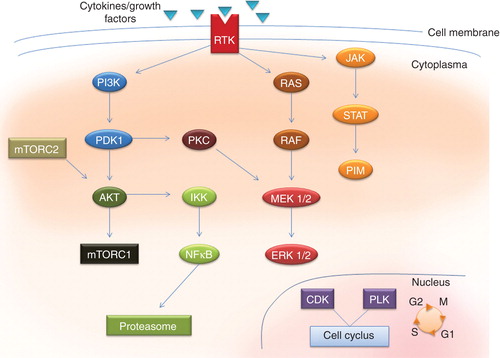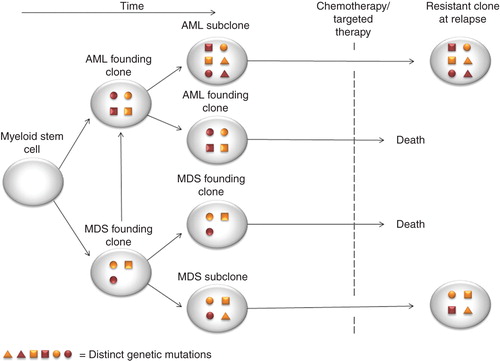Figures & data
Table 1. Protein kinases can be divided as receptor protein kinases and nonreceptor protein kinases, depending on their cellular location.
Figure 1. Central protein kinases to be target for treatment of malignant diseases. A wide variety of cytokines and growth factor can bind membrane-bound receptor tyrosine kinases and activate intracellular cascades involving several intracellular protein kinases, representing them as potential target for new therapeutic agents.

Figure 2. Model of AML and MDS mutational and clonal evolution and mechanism of resistance to therapy. Mutations with myeloid stem cell or myeloid progenitor cell occur and develop to AML or MDS phenotype is followed. Branching evolution occurs as progression mutation occurs and gives rise to subclones. These subclones can be resistance to chemotherapy or targeted therapy obtained, and at relapse the original subclone with mutation predicting for resistant to therapy will occur both in AML and MDS.

Table 2. The main morphological, clinical, cytogenetical, molecular genetics and treatment options in the major myeloid malignancies.